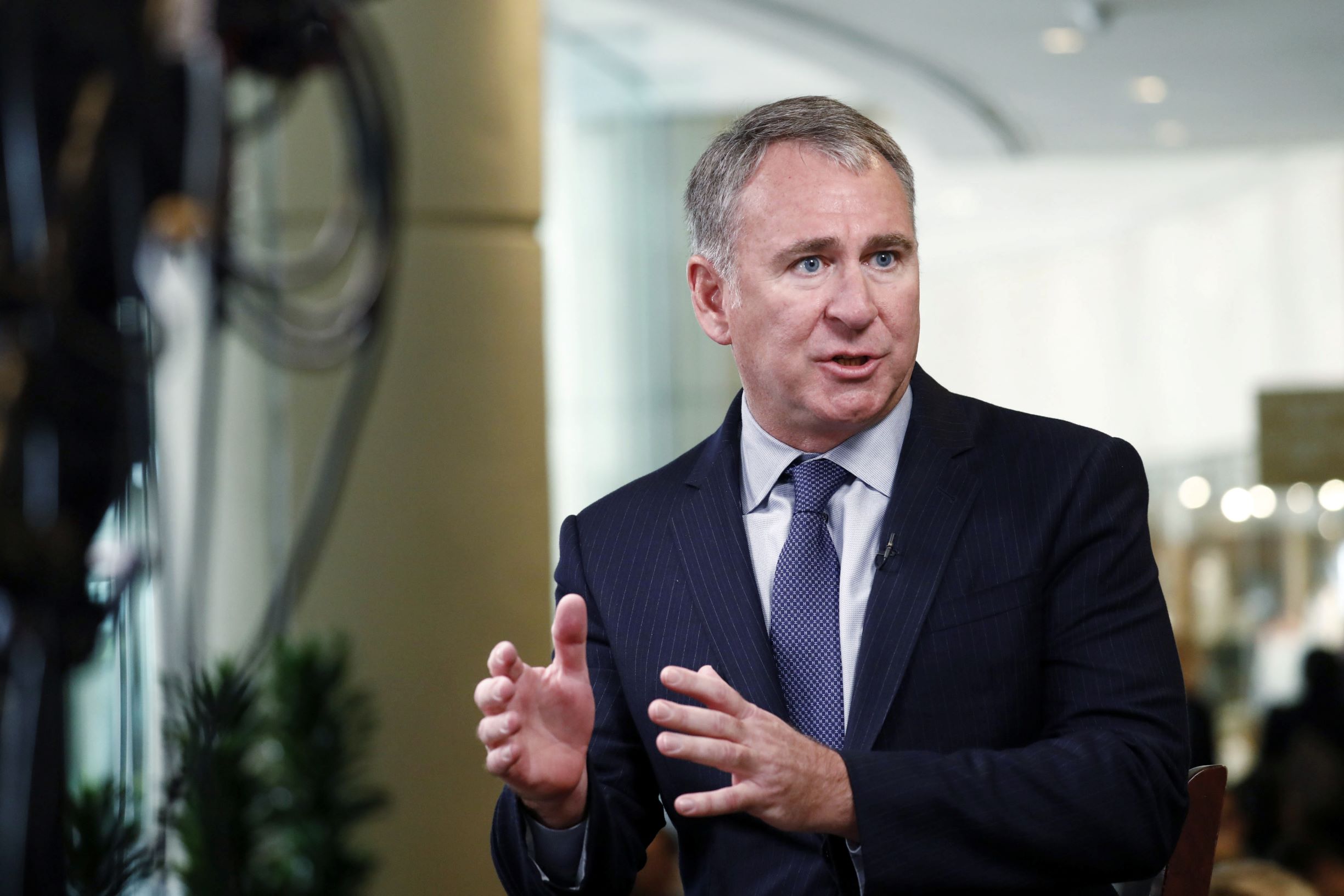How Ken Griffin Became a Multi-Billionaire Business Tycoon
The financial prodigy owns a massive $230 million Central Park penthouse—the most expensive home ever sold in the U.S.—and a $2 billion art collection.

In 1987, while many of his classmates at Harvard were out partying and living the stereotypical college life, a student named Ken Griffin was already focused on building his future. The 19-year-old was busy developing the skills and laying the groundwork for what would eventually become a financial empire, amongst the largest such firms in the world. His setup was Spartan and ordinary by most standards, composed of a telephone, a personal computer and a fax machine (eventually enhanced by a satellite dish he placed on the roof of his dorm), but his ambition was anything but modest.
Raising $265,000 that included money from his mother, grandmother and two other investors, Griffin sought opportunities to profit off the convertible bonds market. Despite these humble beginnings, it didn’t take long for Griffin to get noticed by the financial community. Attracting the admiration and support of hedge fund Impresario Frank Meyer due to the success of the investment strategies Griffin devised while at Harvard, he returned 70% in a single year working with Meyer, thus drawing the attention and investments of other high-profile financiers.
On the basis of those results, the economic wunderkind was eventually able to establish Wellington Financial Group in 1990 with $4.6 million. Rebranded as Citadel in 1994, with the name based on the idea of providing a safe place for funds during turbulent times, the Chicago-based hedge fund today oversees more than $30 billion in capital.
Fast forward, and that young prodigy has become one of the titans of the financial world, with a net worth estimated to be north of $12 billion. A pioneer in the area of quantitative research, using complex mathematical models to most effectively invest the assets under his control, Griffin was years (if not decades) ahead of his rivals in understanding the power of such investment techniques, made possible by the rapid advance of computer technology. Griffin ensures that all areas of Citadel’s business are supported by this advanced level of technological supervision and analysis.
https://www.instagram.com/p/6Fe4YKNJz8
Another entity, Citadel Securities, in which Griffin is a majority owner, is one of the largest market-making firms on Wall Street and is estimated to be responsible for around one in five stock trades in the United States. Perhaps it’s only fair that the man who helped invent modern Wall Street’s current reliance on financial technology is still so influential in the very system he played such a major role in crafting. It would be safe to say that he remains one of the most powerful, and followed, personalities in the financial world, given his outsized influence on both the hedge fund and market-making industries in the United States and around the globe.
While Griffin has become a pillar of the financial community, the larger public has gotten to know the 51-year-old billionaire not by how he makes his money, but by how he spends it. Griffin is one of the most prolific philanthropists in the country, with hundreds of millions of dollars donated to a wide array of charities, including some $300 million to Chicago-based nonprofits alone.
Chicago institutions that have been the beneficiaries of his largesse include the Field Museum, the Art Institute of Chicago and the Ann & Robert H. Lurie Children’s Hospital of Chicago. The $125 million gift he gave to the Museum of Science and Industry (soon to be the Kenneth C. Griffin Museum of Science and Industry) makes it clear that while Griffin now spends some of his time in New York, Florida and London, the Windy City still maintains a huge place in his heart and for his philanthropic activities.
He also supports educational institutions, including his alma mater, as in 2014 he donated $150 million to Harvard to support need-based financial aid and establish scholarships for worthy students. In addition, despite never actually attending the school, Griffin has given $125 million to the University of Chicago’s economics department, rewarding the world-renowned institution for what he sees as vital leadership in the study and understanding of economics and global financial markets.

He has also made headlines for his investments in luxury real estate, and has set multiple records for purchases in cities around the country and the world. These include his January 2019 purchase of a massive apartment at 220 Central Park South that is his pièce de résistance.
Located around Billionaires’ Row south of Central Park, and comprising 24,000 square feet, Griffin’s New York City spread cost a record $238 million, beating the previous record for the most expensive American home ever sold by more than $100 million, and setting a new benchmark for Manhattan real estate. Even amongst his new neighbors in the Robert A.M. Stern Architects-designed building, global titans and economic powers themselves, Griffin stands above the rest. Later, Griffin reportedly acquired two more apartments in the same building on Central Park South, paying $1.89 million and $2.06 million for the adjacent pads on the twentieth floor. According to the New York Post, “the units appear to be for either staff or guests.”
In Palm Beach, Griffin has now amassed the largest private estate in the posh community, where his well-known neighbors include President Donald Trump, Howard Stern, Steve Wynn, Ronald Lauder and Rod Stewart, to name a few. He owns at least 20 contiguous acres in all according to local media, and this past September, the Palm Beach Post reported on his acquisition of a $99 million property, an eight-bedroom oceanfront mansion—making it the town’s second-largest single seller/single buyer deal ever. The seller was said to be financier and former Los Angeles Dodgers owner Frank H. McCourt Jr.
He has also made his mark on the art world, not only in his donations to institutions like the Museum of Contemporary Art Chicago and the Museum of Modern Art in New York, but as an avid collector of some of the world’s most expensive pieces. He spent a combined $500 million on two pieces alone in 2015, including Willem de Kooning’s Interchange and Jackson Pollock’s Number 17A.
https://www.instagram.com/p/2Gey4zNJwS
According to reports from the before that transaction, Griffin’s art collection has been valued at more than $2 billion, and it currently includes pieces that have been loaned to museums in order to allow the general public to enjoy the works he owns, in itself a form of philanthropic generosity. After all, the only area that seems to inspire Griffin as much as the financial markets are the philanthropic opportunities that his immense wealth enables him to pursue. It’s an undeniably impressive journey for a teenage prodigy who began his career with a fax machine set up in a college dorm.
